By Lawrence Haywood, Mar 1, 2025
There’s a stigma around one of Vietnam’s premier tourist attractions, one that designates the humble village of Hoi An as nothing more than a tourist trap. In reality, though the numbers of tourists in Hoi An are huge in amount (1.5 million in 2022), their presence is never overwhelming and the true cultural beauty of Hoi An speaks louder than its critics.
Hoi An’s position on the East coast of Vietnam has brought it both mercantile prosperity and the constant threat, and occasional execution, of colonization from Japan, China, France, Portugal, and The Netherlands. Such occupations, along with modern tourism, have bestowed Hoi An with an international flavor through its temples, bridges, old trade houses, food, and nightlife.
The possibilities for exploration of this ancient trade town are massive and it would not be unreasonable to allow about a week to see everything of worth. At Incredible Asia Journeys, we have condensed the considerable list of Hoi An’s top attractions to a more manageable number. So, here are our 10 best things to do in Hoi An.
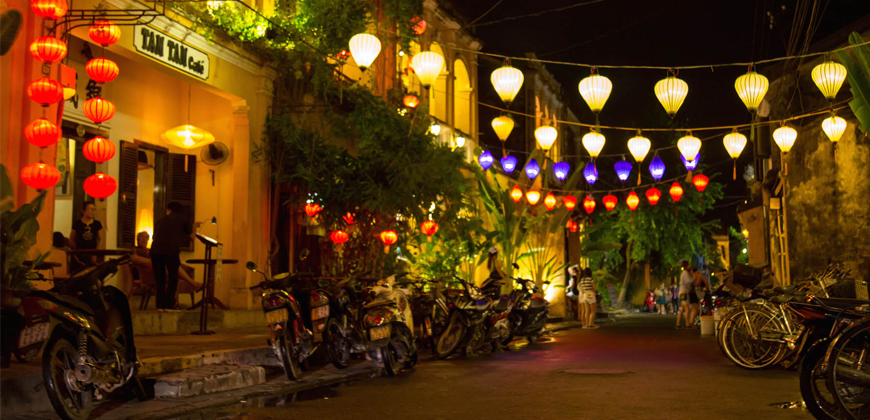
Hoi An Ancient Tower at night
In a bid to fight off the disrepair of ancient buildings that are regularly hit by tropical cyclones, monsoons, floods, and even lightning, Hoi An’s governing body introduced the Old Town Pass, a small fee that tourists pay to visit the oldest section of this ancient town with its many, many historical and cultural sites.
At just 120,000 VND ($5.25), foreign tourists can explore 5 of the 22 listed attractions available, while domestic tourists pay 80,000 VND ($3.50) for 3 attractions. While this means that a lot of Hoi An’s attractions will go undiscovered, you can prioritize your trip to visit one of each of the 5 categories to get a good feel for Hoi An and its multicultural history.
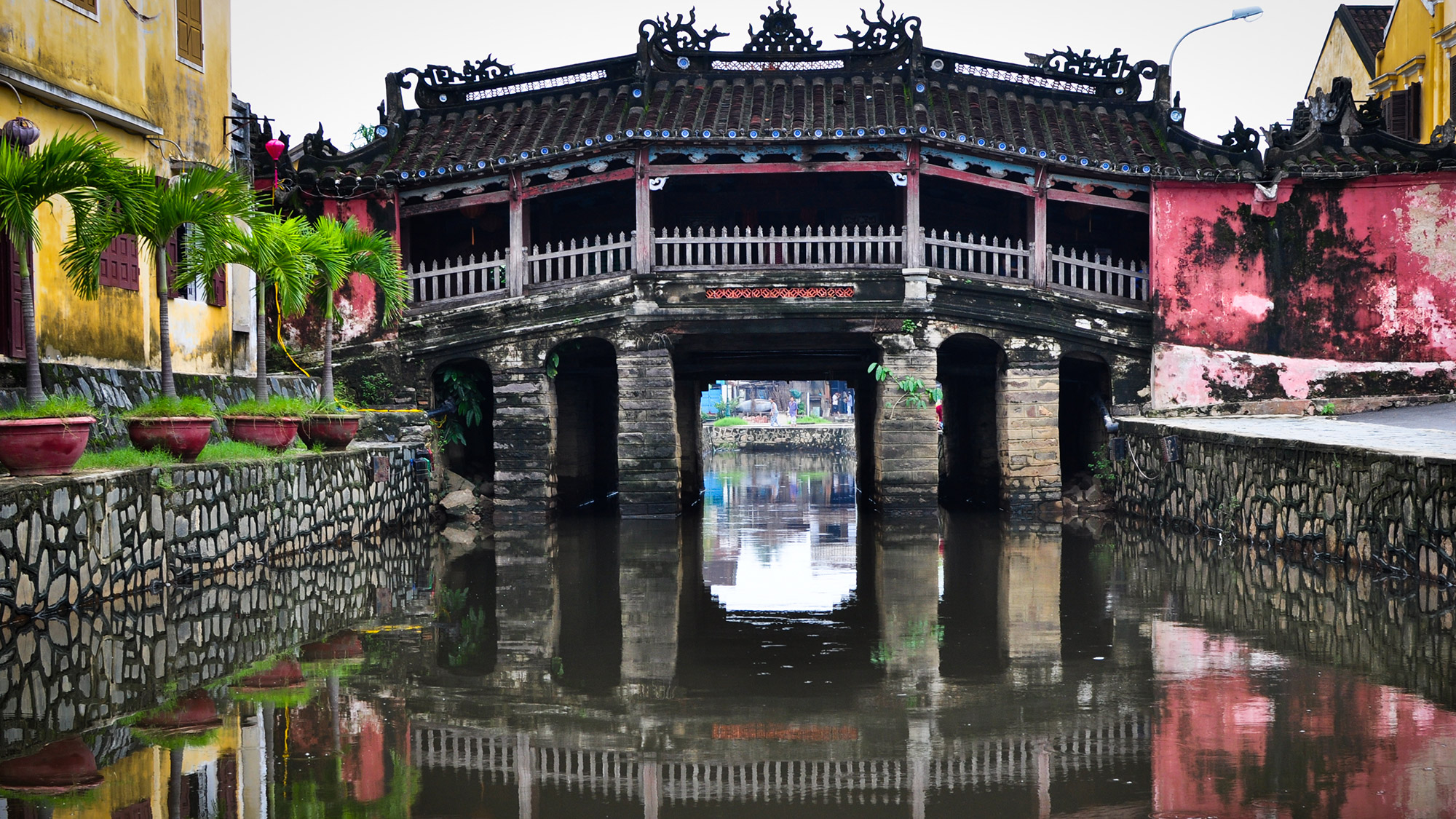
Japanese Covered Bridge in Hoi An
One of the top things to do in Hoi An has always been to visit the Japanese Covered Bridge, a small, attractive 16th-century construction by the occupants of the time. The bridge has been renovated numerous times and now belongs to an attraction category all of its own.
As far as old family houses go, the 200-year-old house of Tan Ky is certainly one of Hoi An’s best, with a typically beautiful interior and exterior along with evidence of a long history of trading and devastating flooding available to view within.
Phuc Kien was built in 1757 and is the oldest assembly hall in Hoi An. This was a place of business for the traders of Hoi An and the incredibly ornate buildings and courtyards of Phuc Kien demonstrate the affluence of people in this line of work.
For museums, you can’t go wrong with the Museum of Trade Ceramics, which takes visitors through some of Hoi An’s earliest exports and the journeys such products embarked on around Asia and the Middle East.
The Handicraft Workshop is an interesting look at the history and current practice of Vietnamese crafts such as toys, porcelain, and jewelry. You can see the artisans working so you can be sure of their products’ authenticity.
While the Old Town Pass is good for learning the history of the town, for learning of the current culture and lifestyle of Hoi An’s residents, the best thing to do is rent a bicycle and take to the countryside roads. Many day trips from Hoi An can be done on a bicycle and these are a great way to the all-too-often unexplored surroundings.
It’s easy to get enraptured by the magic of central Hoi An, but the town is fringed by beautiful countryside, rugged marshland, and those highly sought-after golden views of far-stretching rice paddies. You can try a tour such as Heaven and Earth, which has great excursions to tiny craft workshops that otherwise would have remained a mystery. If group tours aren’t your thing, then you can rent a bicycle in a very cheap and very trusting way from random vendors in central Hoi An.

Biking in Hoi An
Consistently making travellers’ lists of the top reasons to visit Hoi An are its delightful beaches that are pressed against the East Vietnam Sea. Cua Dai and An Bang beaches are the two big names in this category and as a result, both draw big crowds of domestic and foreign tourists to find tranquillity from the bustling town on the palm tree-lined white sand. Unfortunately, they don’t always find it, as these beaches can get just as crowded as the streets in the town on a nice day.
If the Hoi An Weather is playing ball, you should head instead to the aptly named ‘Hidden Beach’, a small section of sandy coastline to the north-west of Cua Dai. Here, the Lam family runs a restaurant and bar, and buying something to eat or drink from them helps the family stave off the approach of big hotels looking to commercialise one of Hoi An’s best-kept secrets.
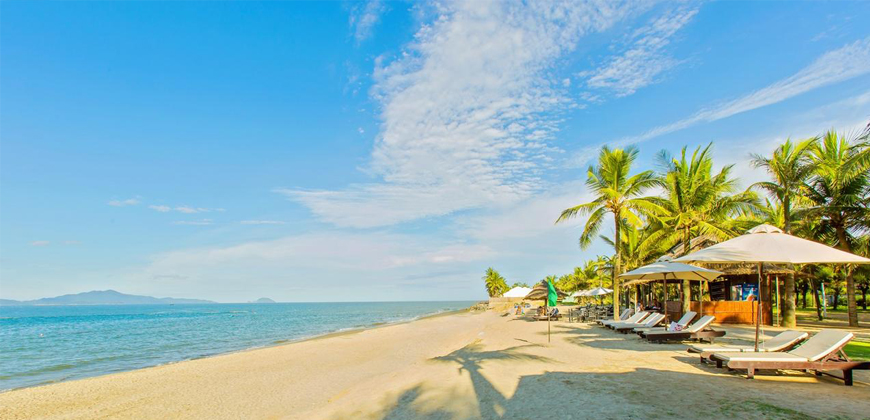
Cua Dai Beach
The vivacity of trade that ran through the veins of Hoi An in its past is still alive today, albeit contained on land now. It’s no secret that Hoi An is a shopaholic’s dream, the tailors here are among the best in the world, and the wealth of options when it comes to personalized clothing is staggering. The competition for business in Hoi An, especially during its quieter season, can spell great deals for tourists with a knack for bargaining.
As a major port of call on the famous Silk Road, the tailors of Hoi An have had centuries to perfect their craft, and if you can find a reputable business such as A Dong Silk, then a quality product at an astoundingly low price is definitely within your reach.

A Dong Silk Tailors
Of the Vietnamese cuisine famous throughout the world, not much has originated in Hoi An. However, its current position as an international destination has meant that many Vietnamese and universal classics have been borrowed from around the country and abroad, finding a new life and new flavor here. This is the case with dishes like phở, bánh mì, and wonton noodles, reflecting the melded influences of Vietnamese, French, and Chinese in its makeup.
Popular dishes coming from Hoi An don’t enjoy the same international acclaim, but they are decidedly tasty, which is really the main thing. A trip to Hoi An can’t be complete without a meal of Cao Lau, a delicious but incredibly laborious dish that requires water from a certain well and vegetables from a certain farm outside the town.
A plate of wonderful Bánh Bao Bánh Bạc (or ‘white rose’) would go well afterward, these dumplings have secretive interiors that no chef is willing to reveal exactly. This can be finished off with a bowl of Xí mà, a viscous, black dessert with the appearance of tar but the flavor of sweet pennywort.
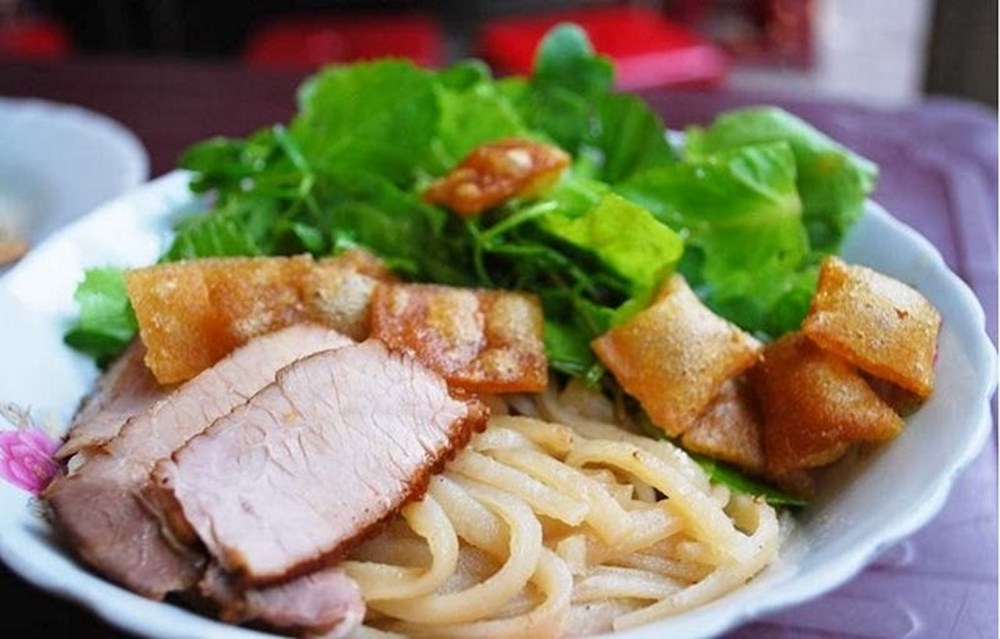
Cao Lau in Hoi An
Once the sun has settled behind the Thu Bon River, the ornately colorful lanterns hanging above the streets turn on and Hoi An’s fantastic nightlife begins. Of course, the bars and nightclubs of Hoi An are fairly recent inventions built to reap the rewards of the backpacker market. You won’t find a deeply cultural experience at any of the local bars in Hoi An, but you’ll find a fervent, international crowd in good spirits.
Most bars have a home on An Hoi island, directly next to the Thu Bon River as well as the heart of Hoi An’s backpacker hostels. Here you can find the famous Tiger Tiger Bar, as well as the copyright-disregarding Mr. Bean Bar and Moe’s Tavern. More upmarket bars are available in the form of White Marble, a quiet, sophisticated offering worthy of the overall aura of Hoi An, as well as Q Bar, a stylish cocktail bar with international appeal.
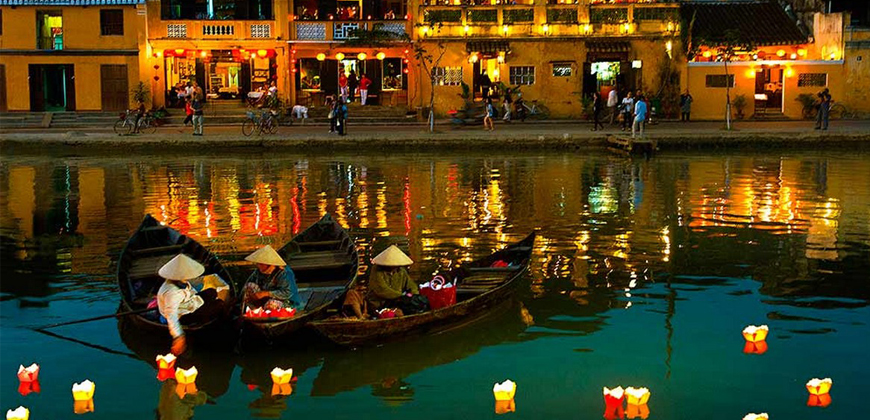
Thu Bon River at night
Amid the frenetic whirlwind of tourism and trade, Hoi An can sometimes feel like a bit much to take in. With so much to do, most tourists see the UNESCO World Heritage site at breakneck speed, trying to cram a week’s worth of activities into 3 days.
Despite its simplicity, one of the best things to do in Hoi An is purely to sit down at a café and take it all in, the ladies walking with two baskets of merchandise resting via a plank of wood on their shoulders, the gentle swaying of floating lanterns between bright yellow shop fronts, the chaos of the marketplace as vendors joke with curious foreigners.
A Vietnamese coffee is a perfect accompaniment for these sights and there is no shortage of places where you can get one amongst the ancient streets of this town, vibrant and extroverted in both appearance and attitude.
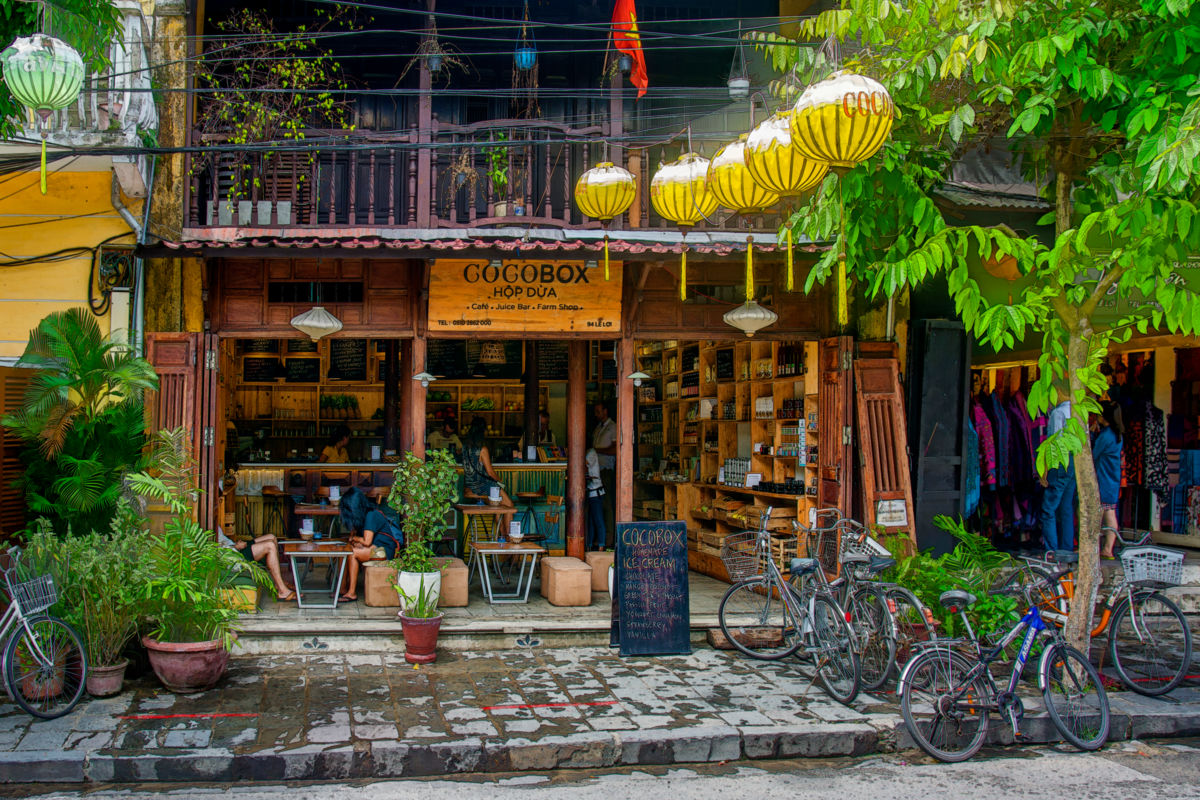
Enjoy coffee in Hoi An
Once a month in this increasingly international destination tradition takes over and the ancient practice of sending floating paper lanterns down the Thu Bon River becomes a ubiquitous sight along its banks. In actuality, the floating lanterns operate almost entirely in the realms of tourism, with locals preferring the traditional methods of ancestral worship through burning incense and making offers at the family altar.
Nevertheless, the burning flames flickering inside paper lotuses is a magical sight, and one not to be missed when the Floating Lantern Festival comes to Hoi An on the night of every full moon throughout the year. This is one of the top things to do if you are visiting Hoi An with kids, as the enchanted scene is magnified tenfold in their eyes.
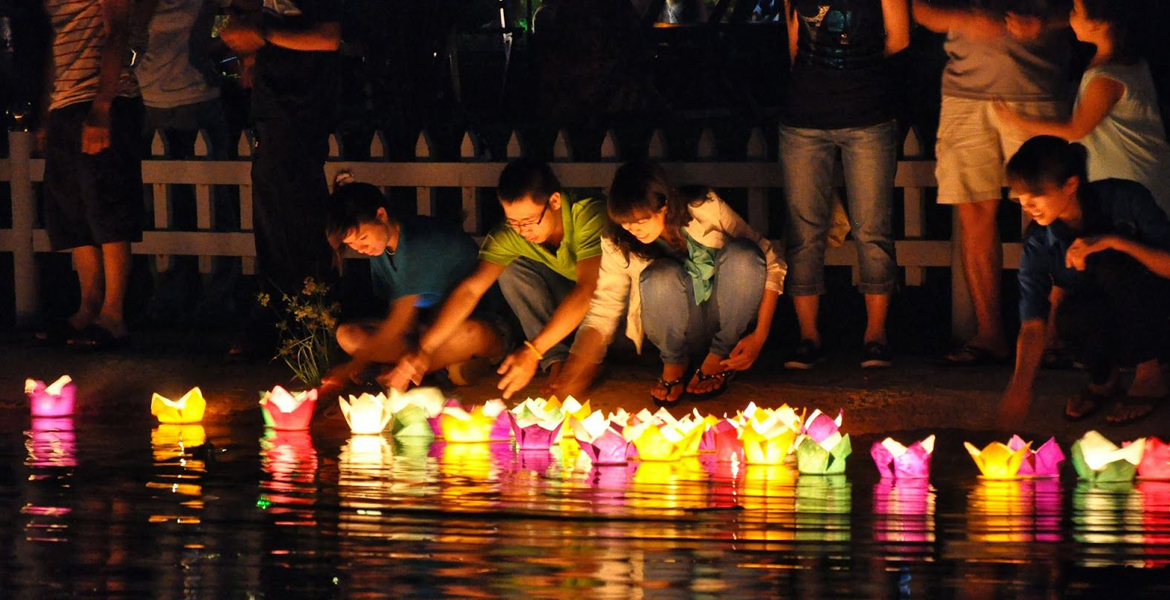
Floating Lanterns Festival
Matching the beauty of the mainland countryside, the Cham Islands are a picture of paradise. 18kms offshore, the Cham Islands are accessible via two ferry services; one sardine-like experience leaving at 8.30 am with the locals (100,000 VND, USD 4.50) or the more spacious express boat leaving from Cua Dai Beach (220,000 VND, $10). The two big draws of the islands are their collection of 4 beaches on Hon Lao Island, as well as the stunning marine park with clear waters and the opportunity to try diving and snorkeling.
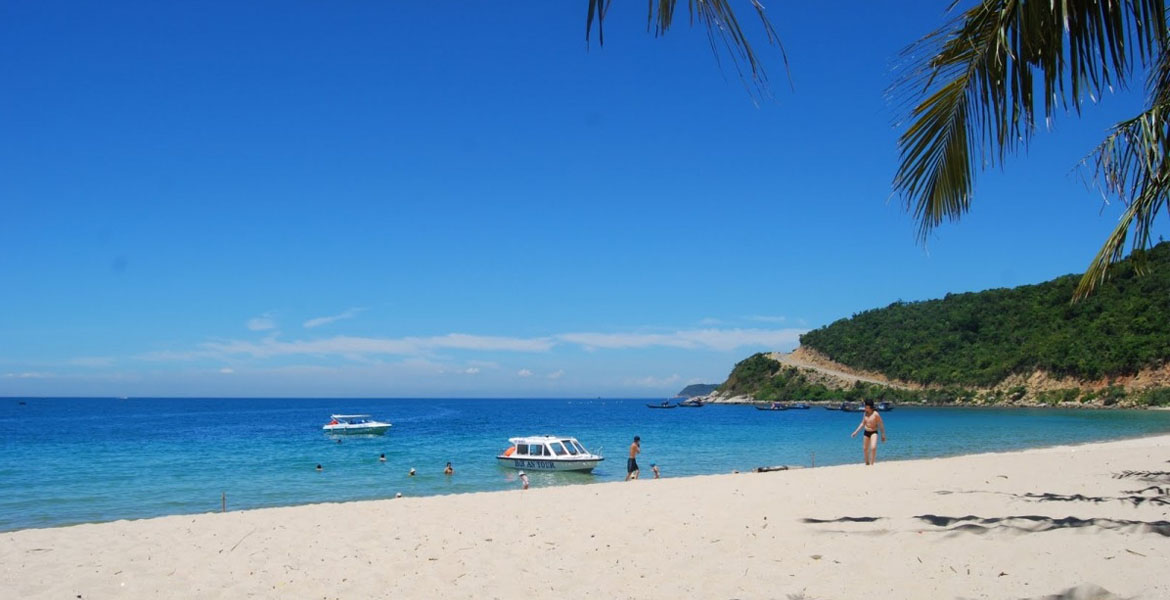
Cu Lao Cham (Cham Islands)
The vast majority of people book day trips to the Cham Islands through tour companies and hotels in Hoi An, leaving little in the way of options for independent travelers.
However, while getting around the islands is rather difficult, you can find homestays not far from the pier, such as Hammock Homestay, which feels like haven of serenity once the day-trippers have gotten the last ferry back to the mainland. For the picture-perfect scene of the sunset over the hidden beach of Bai Xep, staying overnight on the island is the only option, but one that is completely worth your time and effort.
Last but not least, one of the most famous tourist attractions in Da Nang–Hoi An is definitely the Ba Na Hills with the famous Golden Bridge - a magical, beautiful tourist destination. This is in the top list of things to do during your Vietnam Holiday Package.
This bridge has a unique architecture formed by 2 giant hands holding the bridge. Travelers from all around the world have come just to witness this incredible attraction. During your one-day tour to Golden Bridge, you will visit a lot more attractions such as Debay Wine Cellar, Le Jardin D’Amour Flower Garden, French Village, and Fantasy Park.

Vietnam Golden Bridge
So now, you know what you can do in Hoi An Ancient Town, don't wait long, contact Incredible Asia Journeys now to compile all activities in a real Hoi An Day Trip!